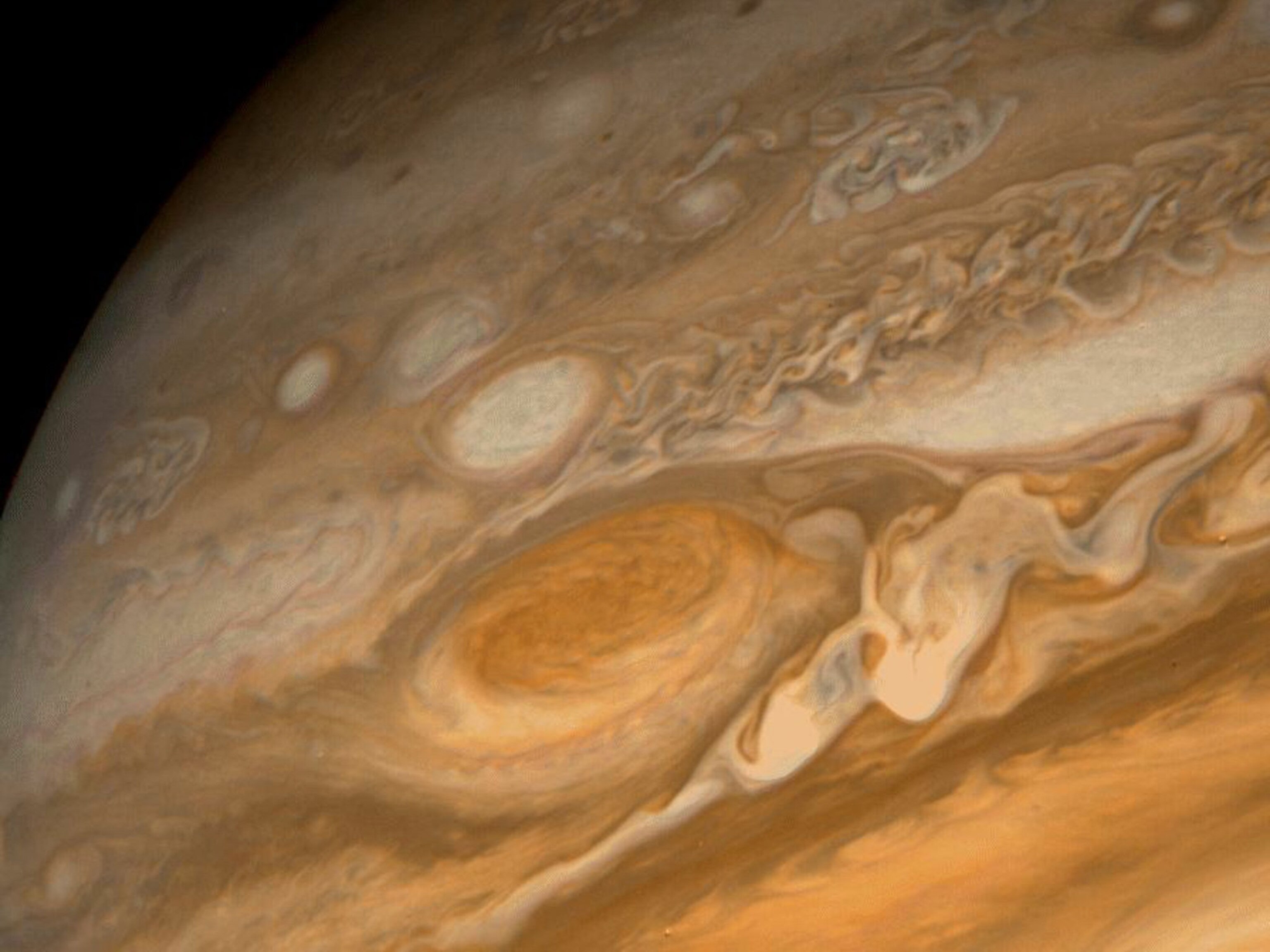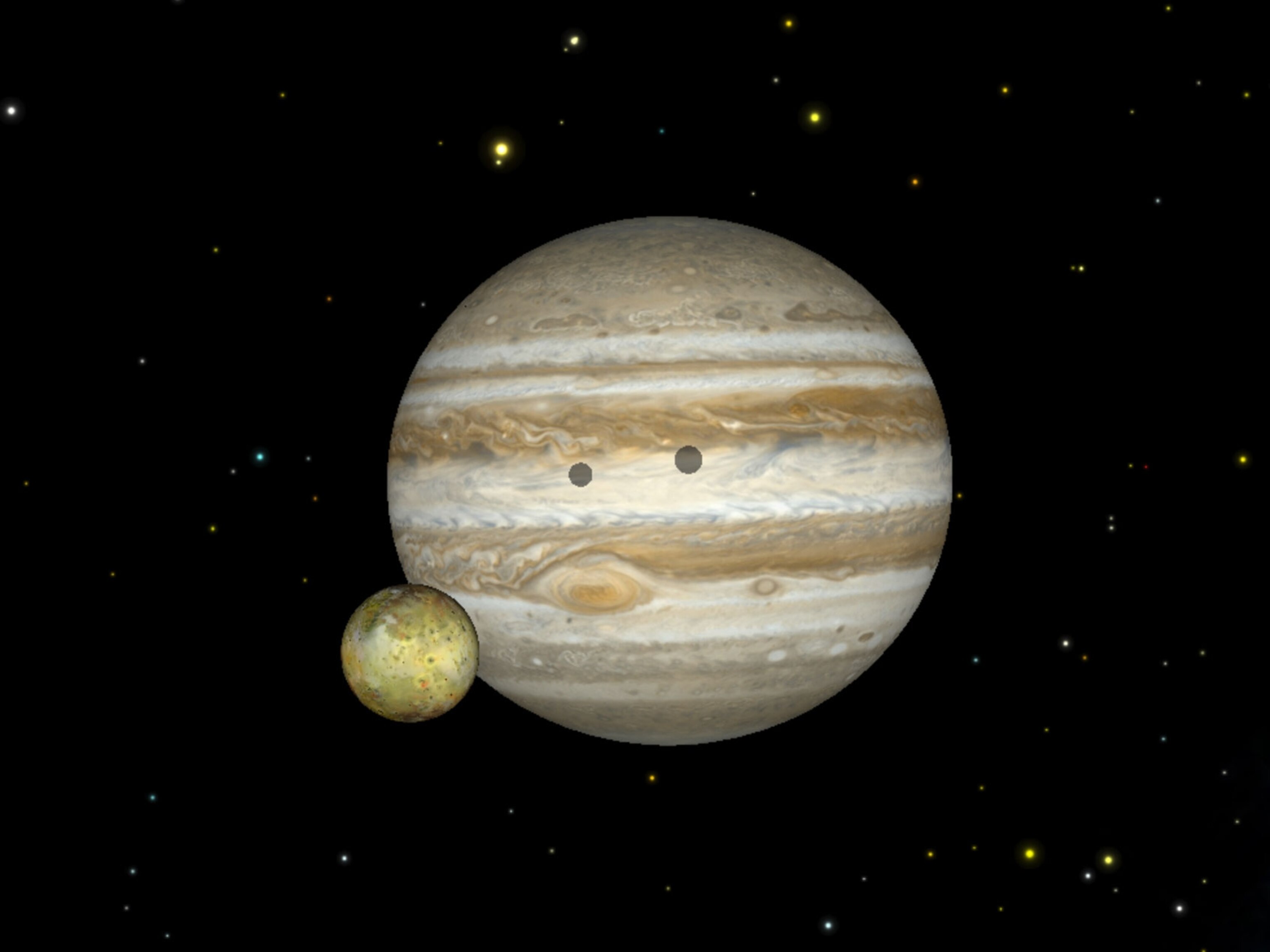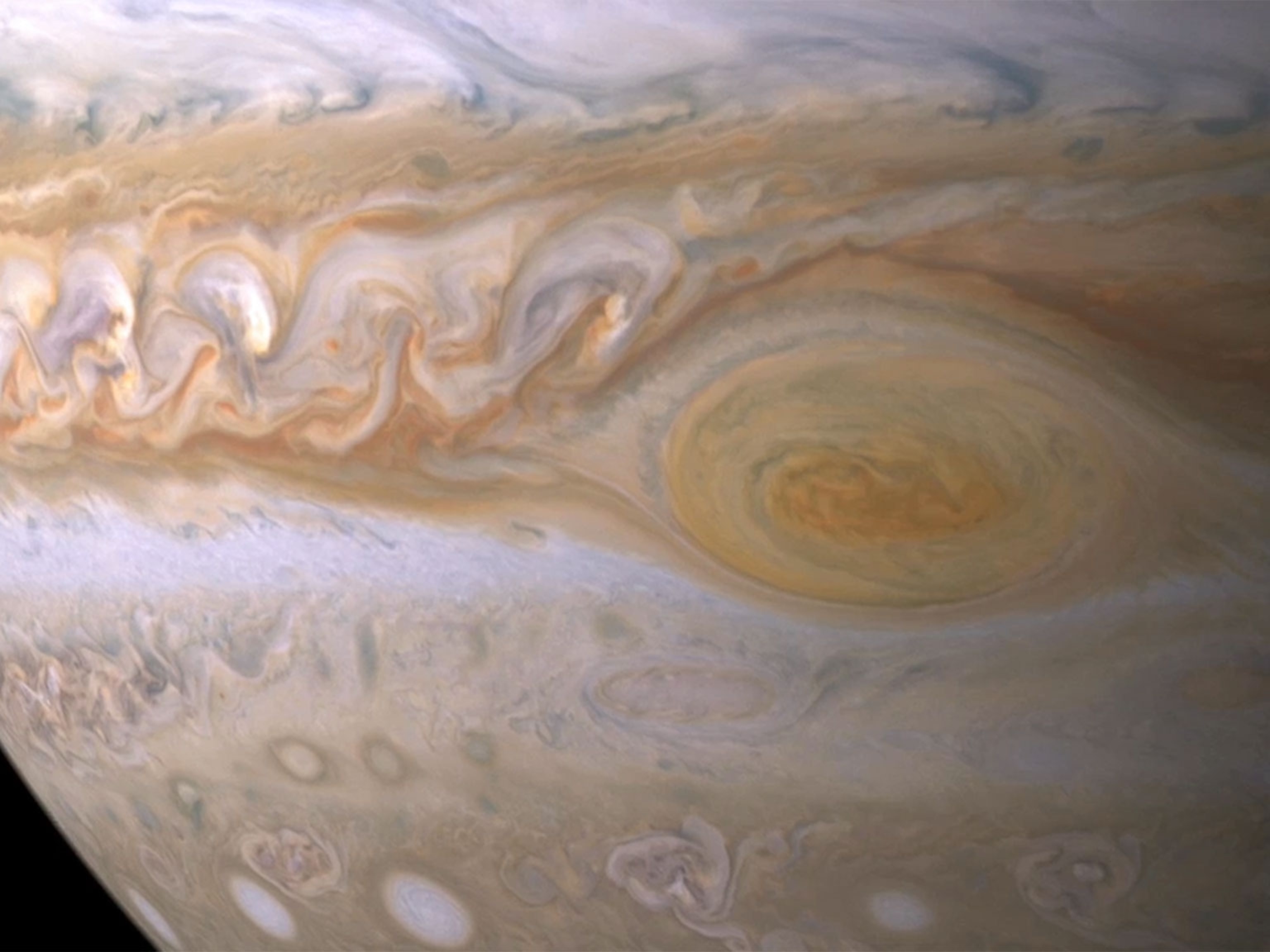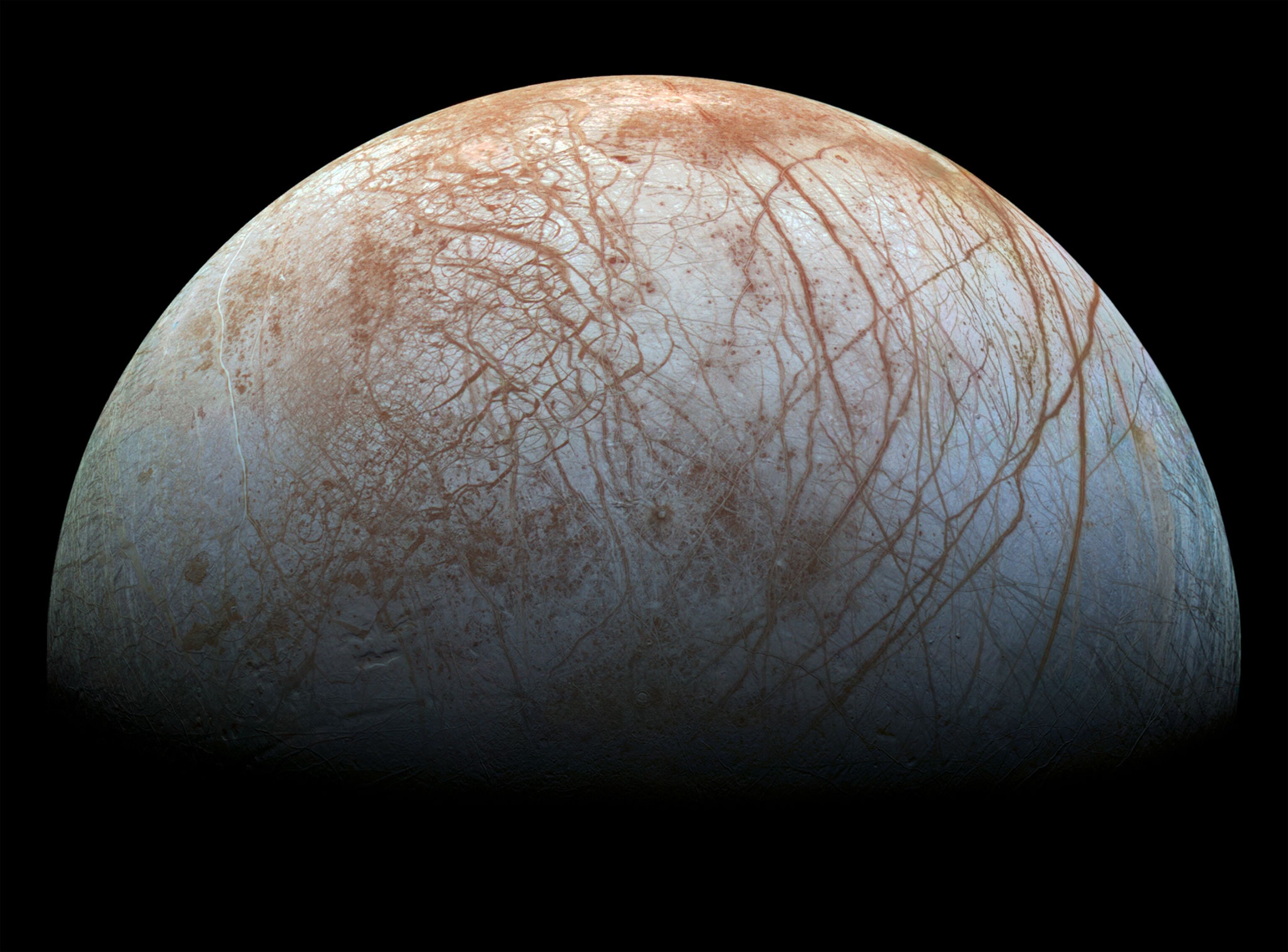
This Week’s Night Sky: See Jupiter’s ‘Water World’ Moon
Peek at Jupiter through binoculars and you should also see its icy moon Europa, thought to host a global ocean that may support life.
Jupiter’s Family. As darkness settles in on Monday, April 18, the waxing gibbous moon will appear parked near the bright starlike planet Jupiter. Look for the cosmic duo shining high in the southern sky.
If you have binoculars or a backyard telescope, you should also be able to spot Jupiter’s four largest moons Io, Europa, Callisto, and Ganymede strung along either side of the planet. Europa is especially intriguing to scientists, because the ice-encrusted moon likely hosts a deep global ocean that may be able to support life.
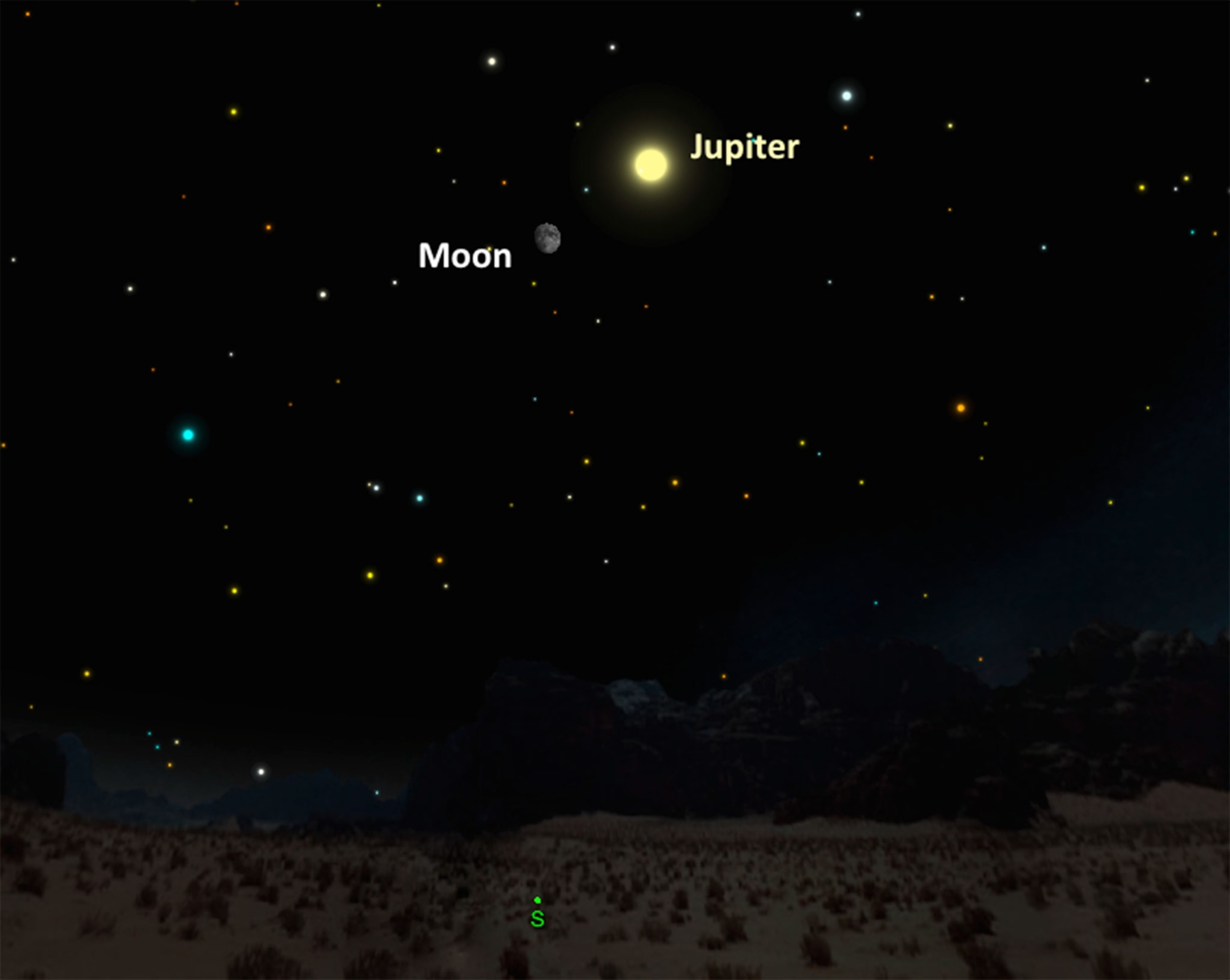
Now a study from Brown University released last week adds fresh clues to the question of habitability. Combining observations and computer modeling, the scientists showed that Jupiter’s strong gravitational tug on the moon’s fragmented crust generates even more internal heat than previously thought.
The findings will not only help the team determine the thickness of the ice shell covering the subsurface ocean, but they will also help explain the chemistry going on in the body of water. That will ultimately have implications for the possibility of life.
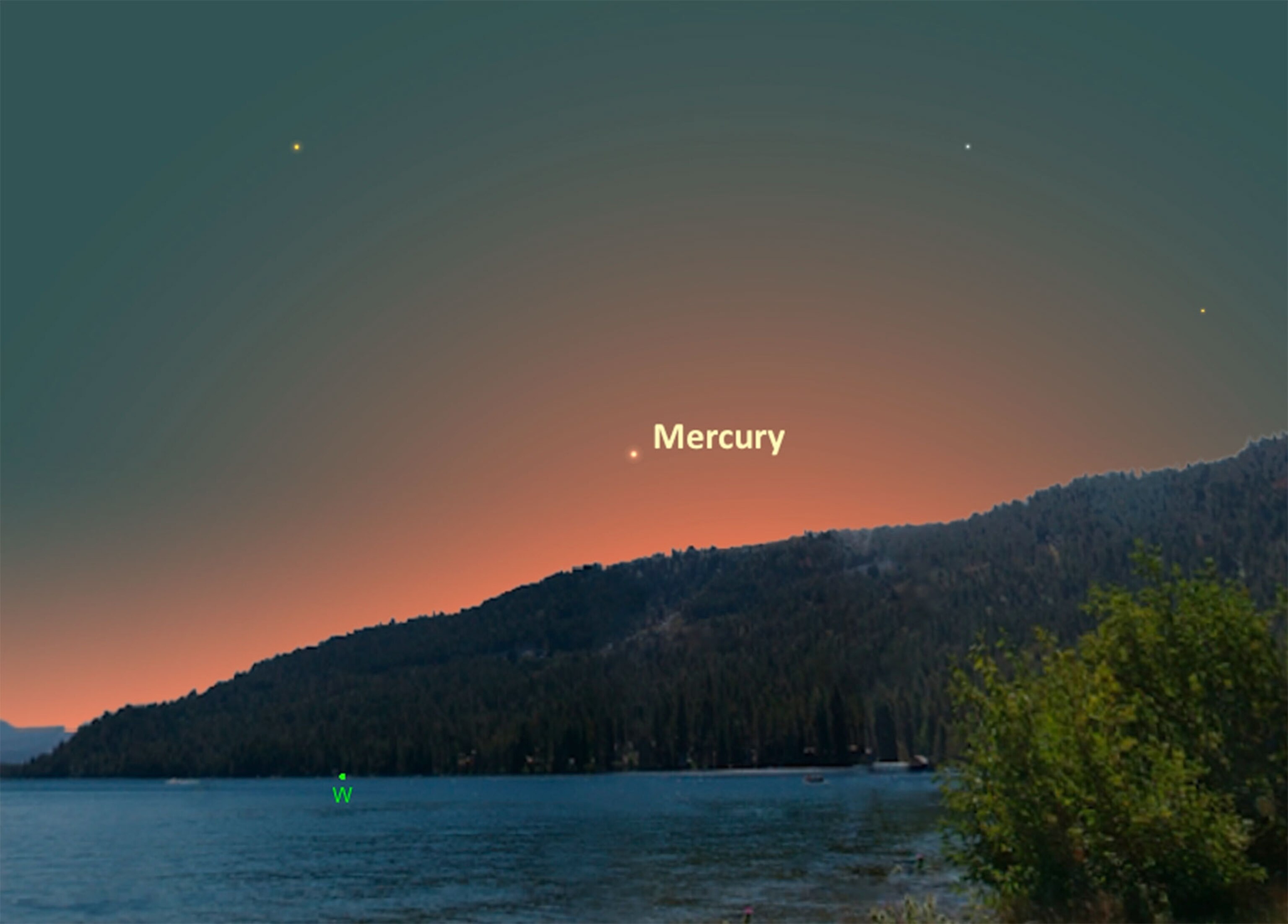
Mercury on High. From Tuesday, April 19, until the end of the week, sky-watchers can hunt down the innermost planet to the sun. This will be the second and final week that Mercury remains fairly easy to see in the low northwest during evening twilight. But the planet is fading fast and will get progressively more difficult to see in the glare of the rising sun.
Half an hour after local sunset, Mercury will be about 15 degrees above the horizon—a little more than the height of your fist on its side at arm’s length. Remember to find an observing spot with a clear view of the northwest horizon and use binoculars in your hunt to initially help spot the faint starlike planet.
Sky-watchers in Europe, Africa, and North and South America will get an even more dramatic view of Mercury in a few weeks: The tiny world will pass across the face of the sun on May 9. Stay tuned for our special coverage of this rare sky-watching event.
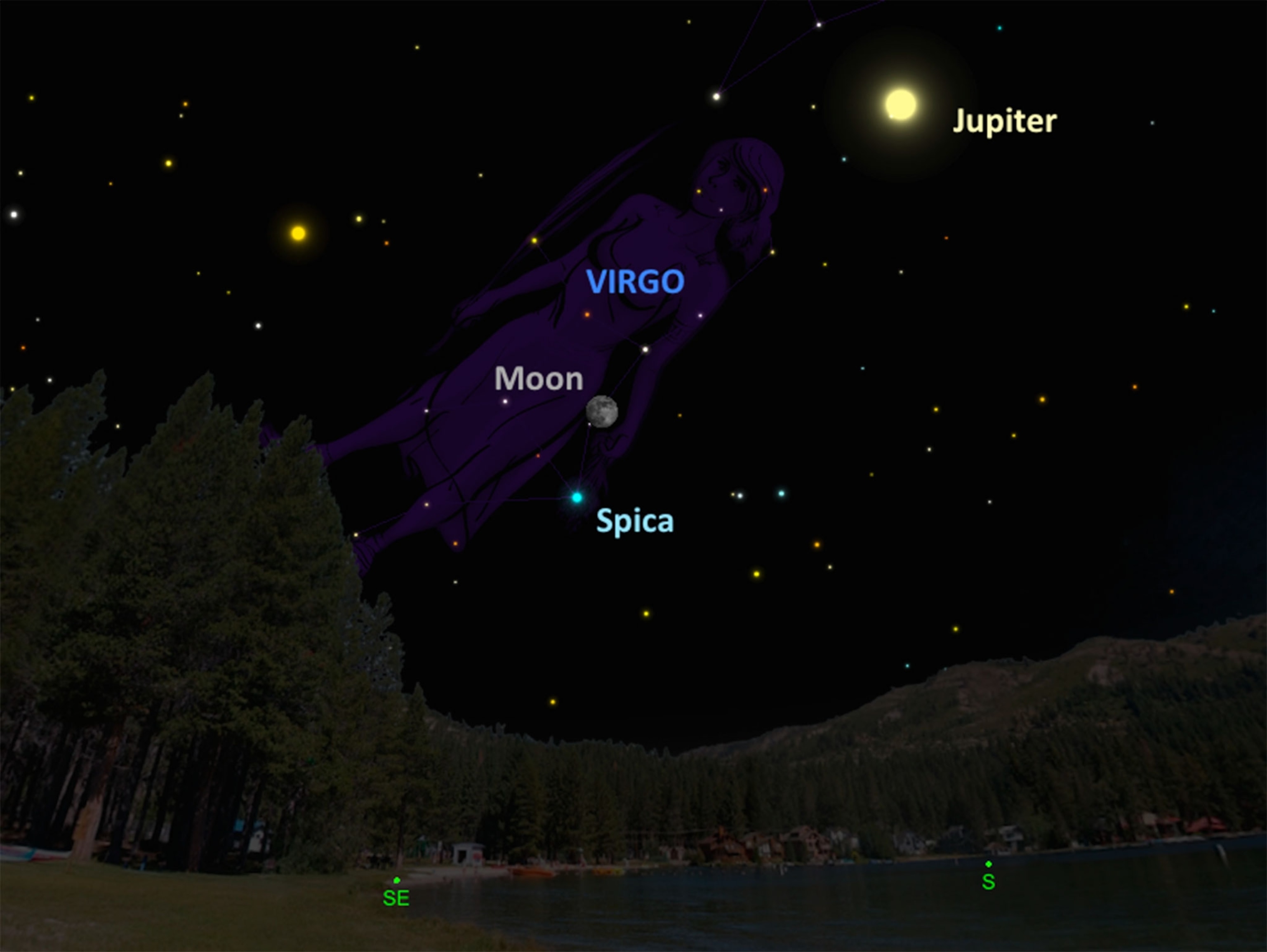
Moon and the Maiden. The moon will continue to slide down the southeast sky this week, and by Wednesday, April 20, it will be approaching the bright blue star Spica, the lead member in the constellation Virgo, the maiden.
By April 21 the moon will sit to the left side of the star, separated by only six degrees—a bit wider than your three middle fingers held at arm’s length.
Spica is so distinctly blue because it is much bigger and hotter than our sun. It is also noticeably bright because it is technically two stars orbiting each other, but at 250 light-years away, they appear as a single point of light. The larger star of the pair is a real giant—ten times the mass of our sun and with surface temperatures that reach an astounding 22,126 degrees Celsius.
Lyrids Peak. In the predawn hours of Friday, April 22, the annual Lyrid meteor shower will peak. However, this year sky-watchers will have to contend with a bright full moon. While viewers can normally see 15 to 20 shooting stars during the Lyrids, the lunar glare will most likely block out all but the brightest streaks.
Individual shooting stars will appear to stream from the shower's namesake constellation Lyra, seeming to radiate from the area of sky occupied by the brilliant star Vega, which currently shines nearly overhead just before dawn.
To catch the 2016 Lyrids, your best bet will be to turn your back on the setting full moon in the west in the early morning hours.


